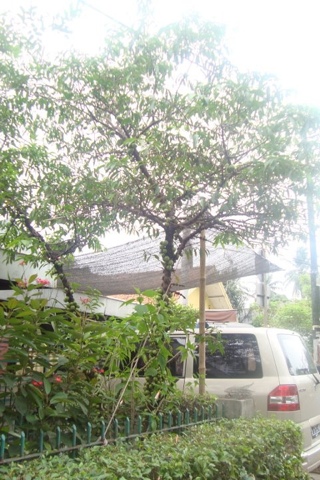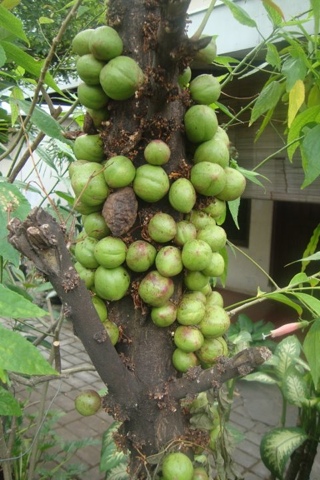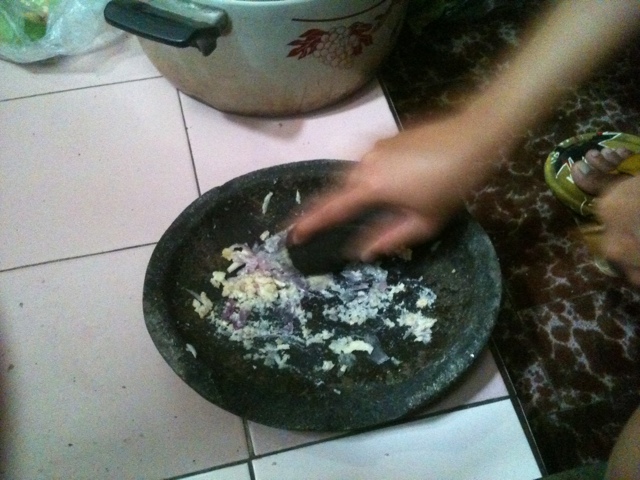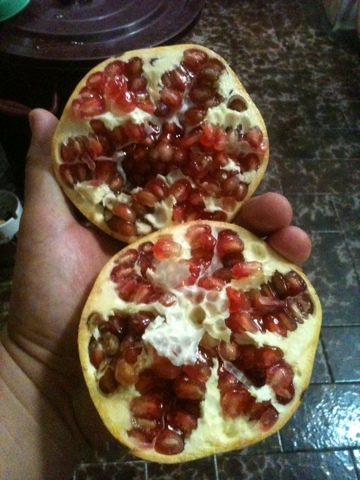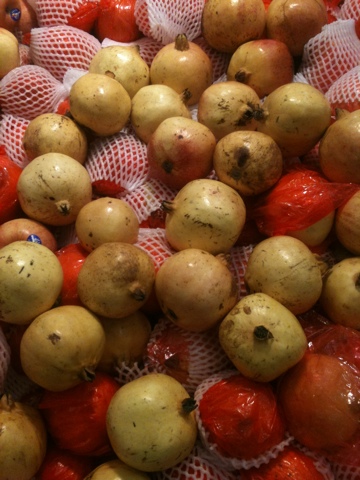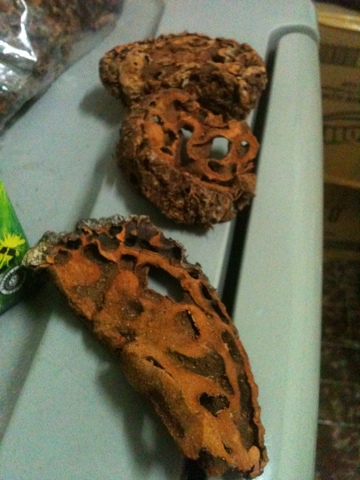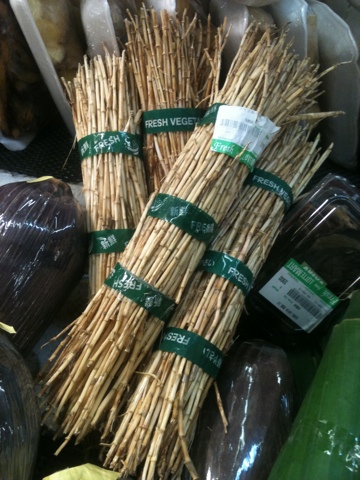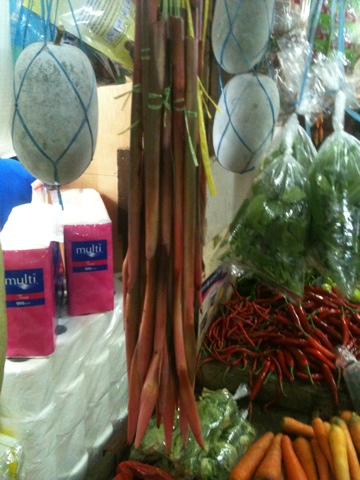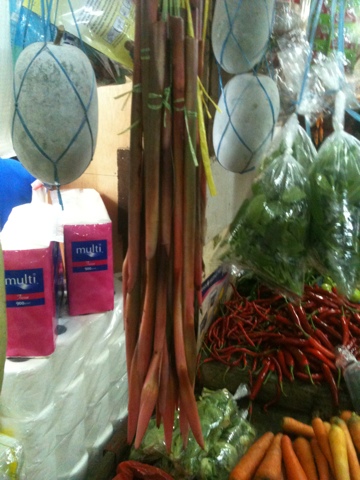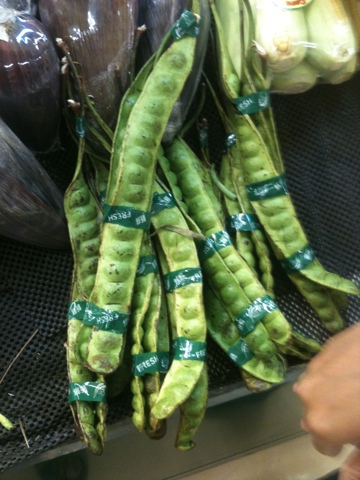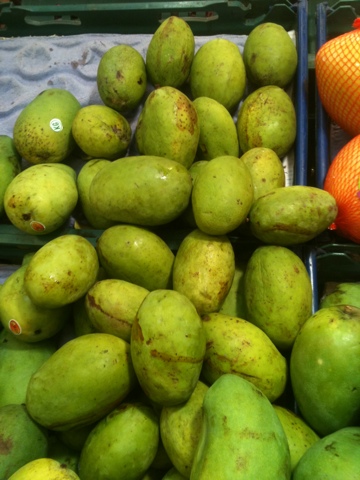Mei and her family take a strange delight in my enthusiasm for what is for them the normal parts of life
Not that its any problem, Bule are strange anyway ;)
And there's many laughs to be had as i eat different foods for the first time. I think the difference with your regular foodie, if such a thing exists, is that im also approaching this as gardener, Permaculture designer, ethnobotanist and publisher.
So while I was in Australia,during our many long distance online chats, Mei starts rattling off names if vegetables I hadn't yet seen or tried
Genjer, poh pohan, etc *
I used google images to track them down and a few I knew. Genjer for example is Limnocharis flava, a plant I know from researching the wild vegetables of Vietnam, and because it's a class 1 declared weed in Queensland with a 50 000 aud fine for cultivation, more of my opinion on that craziness another time!
But a picture online of Poh pohan really sparked my interest.
See the reason I'm so interested in collecting vegetables, especially wild or semi-cultivated types,and information on them is because I think they offer an opportunity to improve and stabilize not only our diet but also the ecology and economy of human habitat.
This plant Poh pohan I found was most likely Pilea melastomoides, a cousin to the nettle family which in European derived traditions is an extremely nutritious wild vegetables. I was excited by the photo online which showed it growing as a low herbaceous layer in what might be an orchard. The reason this pleased me is that across the world we are just about out of ideal arable land, the kind that is well watered, fertile and sunny, and crops that tolerate being grown as understorey in agroforestry settings are of great value.
They allow us to develop Agroecologies that are multilayered and mimic stable woodland settings where the soil remains covered by a living mulch. This Most obviously reduces soil erosion and provides an organic layer that feeds soil organisms. The roots also keep soil open and friable allowing rainfall infiltration that slows movement of water through the landscape and recharges streams and wells.
Another more technical benefit of this layer is in nutrient cycling. When it rains the water is essentially distilled water and as it washes over the leaves and bark of a forest it leaches, through osmosis, the mineral and nitrogen salts out. This leaf flow and stem flow reaches the forest floor and the race is on to recapture it before it washes away. By maintaining a dynamic herbaceous root web we can make Agroecologies more sustainable because they help capture these nutrients before they wash away.
Now, back to Poh pohan..
Fast forward to January 2012 and I'm in Jakarta when mama brings home lalap, a mix of fresh raw salad vegetables usually consumed alongside rice and fried things with a spicy sambal condiment - It's a delicious textural and taste combination.
In this mix was cucumber, lettuce, lemon basil (kemangi) and Poh pohan.
Finally I get my hands on this! And immediately I can see just why it deserves the species name melastomoides, in reference to it's similar appearance to the genus Melastoma.
I query my hosts, where is it from?
They tell me West Java, not Jakarta, it's a plant that likes cooler growing conditions. I can see why when examining it closely as it's a very succulent and delicate looking herb, juicy and crisp, not at all like the much tougher leaves of jakartas footpath and vacant lot weeds that bathe in the humid heat and tropical sun.
It's a popular vegetable, at least enough to be worth importing from outside the Jakarta region. I'm told it's available all year around.
I can see the resemblance also to stinging nettles as the specimens I examine are flowering. I admit to a little terror of the Urticaceae ;) as I've been stung by the giant stinging tree before in North Qld. It's a tree sized nettle covered in silica hairs containing an unidentified neurotoxin, and has been attributed with killing dogs and horses in the past. It got me on the ear and hand and the pain was excruciating like a marine sting. The silica needles lodge in the skin and burst every so often in response to cold or a hot shower on and off for about 2 months. Once bitten twice shy!
After being assured this experience would not repeat I tasted the herb.
It's cool and crisp, tender with little fibre. The taste slightly tart, I'd guess by taste from oxalic acid
The taste is slightly numbing and aromatic, quite similar to another salad green in Vietnam peperomia pellucida.
It is definitely enjoyable.
